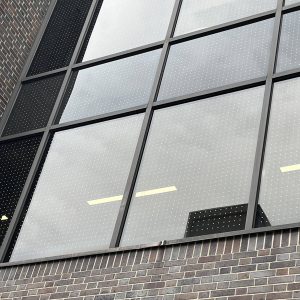![]() Carleton University is committed to protecting and enhancing the ecosystems and green spaces that the university owns, manages, or impacts, in order to improve biodiversity and support a landscape that can respond to future climate change.
Carleton University is committed to protecting and enhancing the ecosystems and green spaces that the university owns, manages, or impacts, in order to improve biodiversity and support a landscape that can respond to future climate change.
The Carleton Campus is fortunate to be located in a very natural and green setting, bordered by the Rideau Canal and Rideau River. Students have long identified it as one of the most remarkable parts of the Carleton experience.
Biodiversity in Campus Plans and Policies
Campus Operations
Carleton University’s land use and management of the 62-hectare campus impacts the local ecosystem through the use of water, campus development and construction, landscaping applications (such as fertilizers in the summer or salt in the winter), and stormwater management. The university has a policy for integrated pest management and has not used chemical pesticides on the grounds for at least five years.
Outdoor Space Master Plan
Carleton University developed an Outdoor Space Master Plan in 2020 to help us better plan and develop the outdoor spaces on the campus. This document will assist the university in identifying and prioritizing outdoor improvements to the campus, such as:
- Sidewalks, paths, and trails across the campus to enhance safety and access for pedestrians and cyclists
- Future open space projects to develop green space
- Renovations to existing open spaces to make them more welcoming and multi-seasonal
- Development of a standard for street furniture and lighting
- Indigenous-focused elements
- New pedestrian bridge connection to Vincent Massey Park
Campus Master Plan
Carleton University has undergone significant changes since the adoption of the first campus master plan in 2010, including the construction of Richcraft Hall, Canal Building, and the new Health Sciences building. The purpose of the current master plan is to establish policies, parameters, and directions for the physical development of the campus, including green spaces. READ MORE
Bird-Friendly Glazing
Carleton is committed to protecting and enhancing biodiversity on its campus. To prevent bird collisions, visual markers (decals) have been applied to the exterior surface of the glass on multiple buildings on campus. It is also now a standard in our design guidelines to incorporate bird-friendly glazing on new construction and major renovation projects involving the exterior of the building.
Current Buildings with Bird-Friendly Glazing
- Engineering Design Centre (EDC) – extension on Mackenzie Building
- Health Sciences Building
- Nicol Building
- Pigiarvik (ᐱᒋᐊᕐᕕᒃ)
- Southam Hall
Carleton has also partnered with SafeWings Ottawa to report bird collisions and work towards campus-wide data and identifying key buildings for additional visual markers. If you observe a bird collision, you can report it through the SafeWings Ottawa website or email Sustainability Carleton with your concerns.

Bird-friendly glazing on Health Sciences, installed in 2018.

Bird-friendly glazing on Pigiarvik (ᐱᒋᐊᕐᕕᒃ), installed in 2023.
Nature Positive University
In 2022, Carleton joined other universities around the world in a pledge to become Nature Positive. Being a Nature Positive university means “restoring species and ecosystems that have been harmed by the impacts of a university and its activities and enhancing the university’s positive impacts on nature” (Becoming Nature Positive).
As part of our commitment to the Nature Positive Universities program, Carleton is working towards assessing a biodiversity baseline and setting specific, measurable targets towards enhancing biodiversity on campus and becoming Nature Positive. We will also report on our progress annually within our comprehensive sustainability reports, which can be found here.
For more information about the Nature Positive Universities program, click here.
iNaturalist Biodiversity Inventory
Do you want to help play a part in developing Carleton’s biodiversity inventory?
Join our iNaturalist project and submit your observations of species you find on campus.